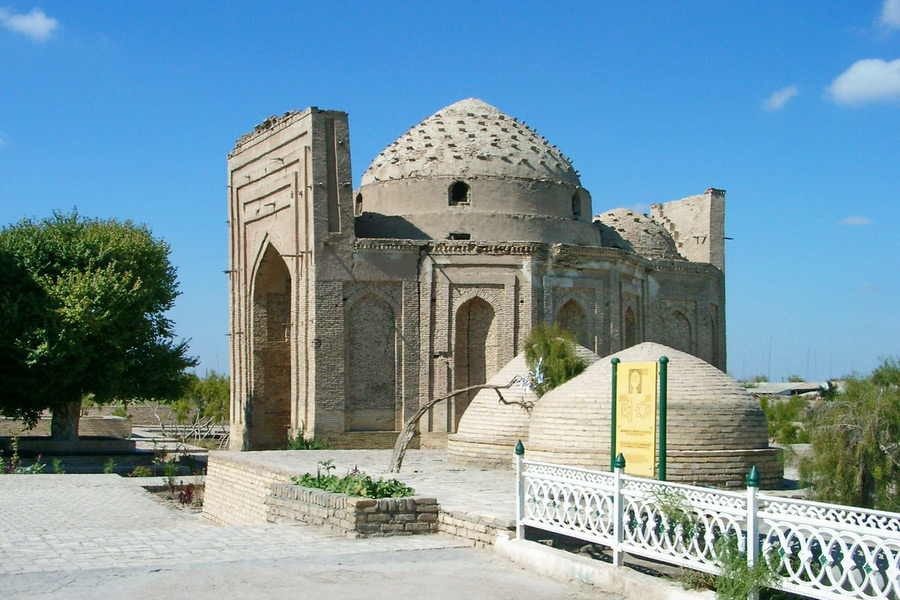Sultan Ali Mausoleum

The Mausoleum of Sultan Ali, a 16th-century ruler, is part of the '360 Saints' memorial complex, opposite the Najmaddin al-Kubra Mausoleum. Sultan Ali was considered the most influential ruler of Kunya-Urgench. However, his tomb remains unfinished, with no inscriptions or decorations on the facade or inside. Despite its simplicity, pilgrims and tourists visiting the tomb of Najmaddin al-Kubra make a point of stopping at the tomb of Sultan Ali.
Construction of the mausoleum began in 1565 after Sultan Ali's death, on the orders of his successor, Haji Mohammed Khan. However, it was never completed. When internal wars broke out, Haji Mohammed Khan fled to Iran. In the 1580s, Abdullah II of Bukhara waged war on Khorezm, further delaying construction. After Abdullah II's death in 1598, power returned to Haji Mohammed Khan, but by then Kunya-Urgench had been abandoned as the Amu Darya riverbed shifted, forcing the population to relocate.
Throughout history, rulers have sought to immortalise their rule through monuments that tell the stories of their era - of great scientists, poets, craftsmen and healers. These monuments become the voice of history, allowing future generations to see, hear and feel the past through travel. The Sultan Ali Mausoleum stands as the last monument of the once great city of Kunya-Urgench, silently preserving the memory of its final chapter.
